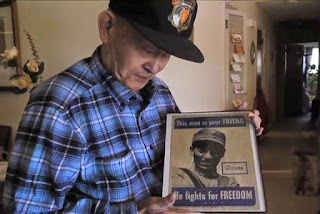The Ancestry (immigration documents) Project: You will mine the Ancestry.com database, available on campus at
http://ancestrylibrary.proquest.com, for information about an immigrant or immigrant family and write a report on what you find and how it compares to what you have learned from the textbook. The report should be roughly 2,000 words and should include full citations of the records you use from the databases (census, passenger list, death index, etc.), as well as copies of the documents.
A list of your documents, properly formatted, is due in class on March 12th, along with copies of the documents. The complete report is due on Monday, March 19th. Students will share their research findings over the course of the week.
Monday is a holiday!
For Wednesday, please read Chapter Eleven and be prepared to answer the following questions:
- How did immigration and emigration numbers change in the period 1921-1945 and why?
- The greatest increase in post-World War I immigration came from where?
- What were the three reasons for actual immigration running well over the 150,000 annual quota in the first six years of the National Origins policy?
- How was the LPC (Likely to become a Public Charge) clause used during the Great Depression?
- How did the U.S. government deal with the refugee crisis of World War II? Give examples.
- During World War II, how were "enemy aliens" treated?
- Describe Japanese internment (numbers, duration, location, recent government response, etc.)
- How did the Chinese in America benefit from World War II? What were the demographic consequences?
For Friday, please read Chapter Twelve and be prepare written answers to the following questions:
- Why is 1909 a significant date for Mexican immigration?
- How did the U.S. deal with Mexican immigrants during the Great Depression?
- How many Mexicans were in New Mexico and California when the U.S. annexed the territory?
- Why was statehood delayed?
- Why is all but impossible to get accurate estimates of the number of immigrants from Mexico (long list).
- Why is the relative standard of living in Canada, the U.S. and Mexico important?
- During World War I, who filled the jobs that otherwise might have been filled by European immigrants in places like Chicago, Detroit, and Pittsburgh?
- What was the bracero program, and why was it created?
- What percentage of illegal immigrants are Mexicans today? What messes up the numbers?
- What accounts for the low rate of naturalization for Mexican Americans? For language persistence?
- How did the United Farm Workers movement combine religion and politics?
- What is the status of Puerto Rico and Puerto Ricans?
- Why do most Puerto Ricans not want independence?
- Where do most Puerto Ricans live?
- What two related problems to Puerto Ricans face in the United States?
- How are Puerto Ricans more like earlier European immigrants than like Mexican immigrants?
- What common phenomenon do both groups suffer from?
